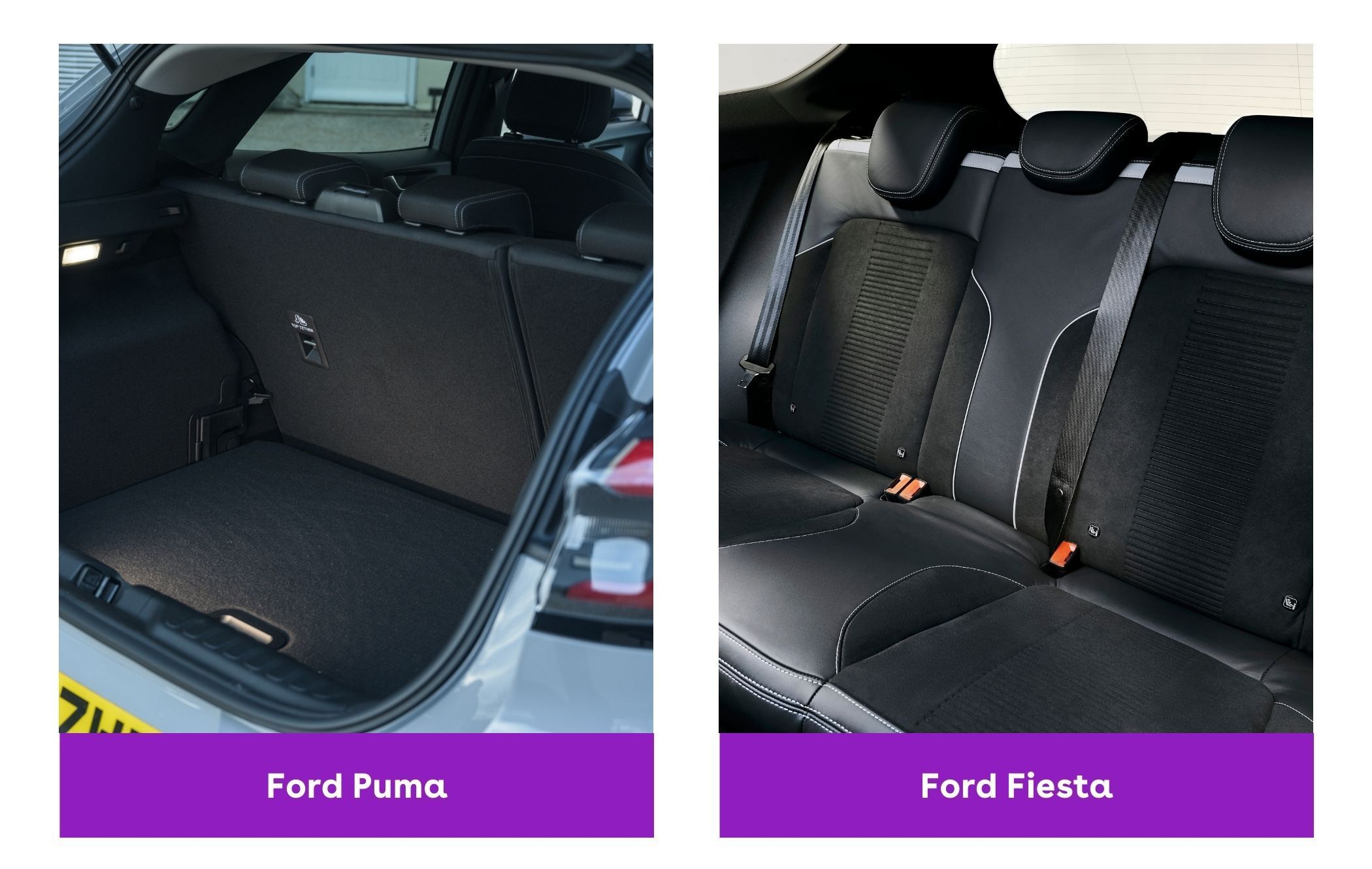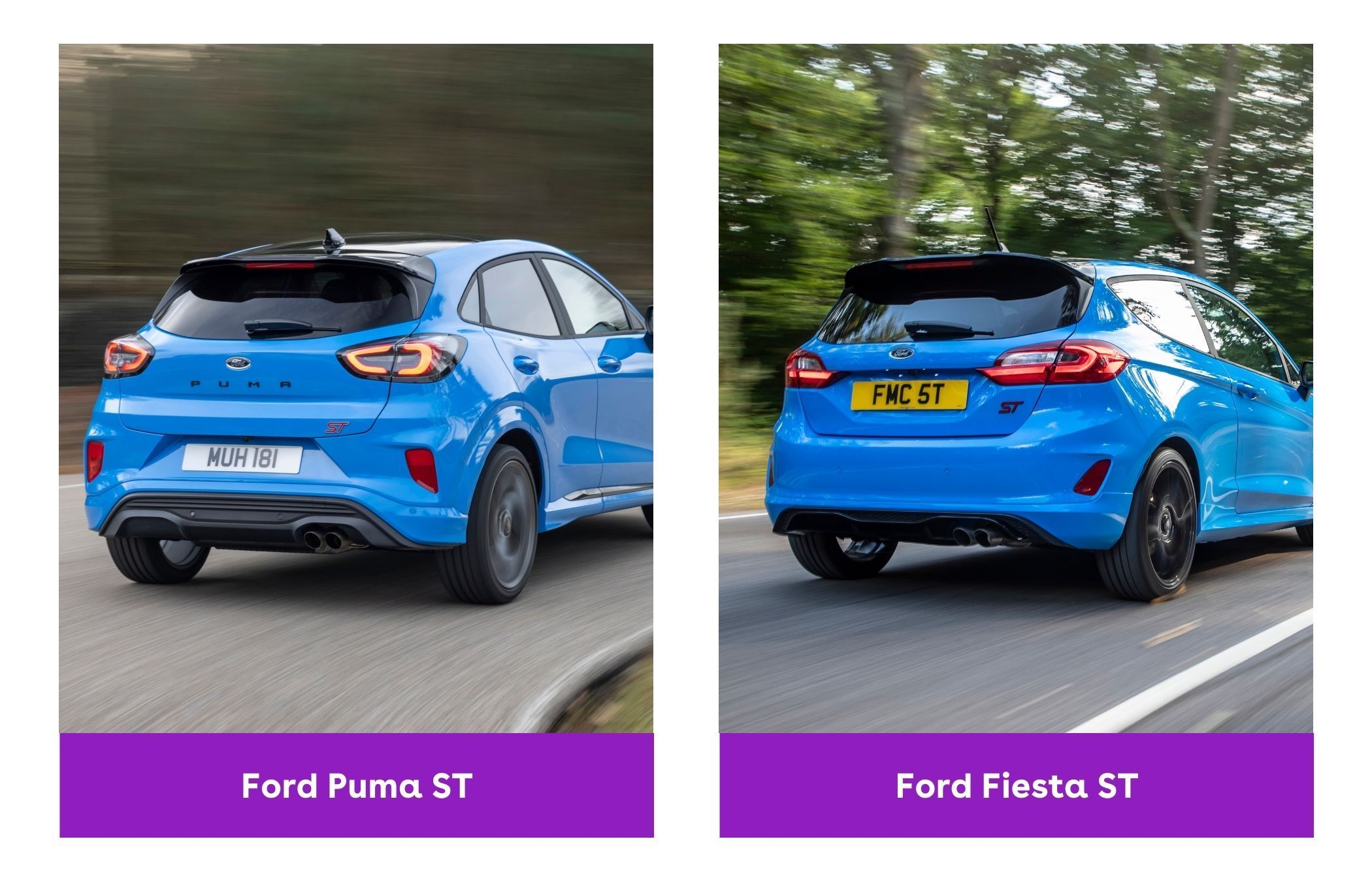Ford Fiesta vs. Ford Puma: which has more style?
They’re incredibly popular cars that the Fiesta tops the charts as the most traded used car most years, while the Puma has been one of (and sometimes) the most bought new car since it was launched.
That’s helped by the fact that they’re instantly recognizable, so whether you go for the latest seventh-generation Fiesta (2017-onward), a newer 2022-onward facelifted model, or an older sixth-generation car, you’ll be able to recognize it as a Fiesta.
Compared with many other small models from other manufacturers, the Fiesta has a large grille area that’s seen plenty of revisions over the years – it’s at its most aggressive and eye-catching on post-2022 facelifted models.
It’s a supermini that seems to tick a lot of boxes. It has a sporty flair but is still mainstream enough to appeal to many different buyer types.
The trim levels help because they give the car different characters – some great examples worth checking out are ST-Line, Active and Vignale.
The Ford Puma, introduced as a compact crossover in 2019, has a more typical SUV-like shape. However, it still has a familiar front-end design with a large grille and curvy headlights that sit on either side of a sculpted bonnet.
The Puma also received a facelift in 2024. Like the Fiesta, it got a more distinctive grille and front-end redesign, including the repositioning of the Ford badge from the bonnet to the grille.
What is it like to drive a Ford Fiesta vs. Puma?
Surprisingly, the Ford Fiesta has been available with a wider range of engine options, including a basic 1.1-liter petrol engine that’s great for keeping costs down, although it can feel a little underpowered compared to the other options.
Long-distance drivers can also pick a 1.5-liter diesel. There’s an 85hp variant and a more powerful 120hp variant, but they’re unnecessary for most drivers who spend a lot of their time around town where petrol can be more efficient.
The pick of the bunch is the highly acclaimed 1.0-liter EcoBoost petrol engine. It’s a joy to drive and can be almost as economical as a diesel on a long run, where you may be able to see up to 50mpg. Some newer variants also have mild hybrid technology to reduce emissions (and your car tax bill).
Because the Puma was introduced at a time when buyers started to turn their backs on diesel power, it’s only available with the 1.0-liter petrol engine, and all models come with mild hybrid assistance.
Like the Fiesta, there are lots of flavors for this engine – Ford offers 100hp, 125hp and 155hp variants across a few different models, and you can sometimes find slightly older versions with 140hp in the case of the Fiesta.
Ford Puma vs. Fiesta handling
The Ford Fiesta gets glowing reviews for the way it handles, and we love its engaging setup. The steering provides a lot of confidence because it’s very direct and weighty enough without being too heavy, while the suspension also offers a lot of road feel without coming across as overly firm.
Fortunately, because the Puma is built on the same platform as the Fiesta and they share so many parts, it, too, handles excellently and offers a far more engaging driving experience than many of its softer rivals.
It’s worth mentioning that ST-Line variants have lower, firmer suspension, which is great for enthusiastic driving, but can be slightly more uncomfortable on uneven surfaces. On the flip side, Active models have higher suspension and are therefore better suited to the potholes that plague our roads.
What is the technology in the Ford Puma and Fiesta?

Because these cars are built on the same platform, they also benefit from most of the same in-car technology, and that’s no bad thing.
For example, all latest-generation Fiesta models and any Puma crossover come with a large touchscreen infotainment system that works with Apple CarPlay and Android Auto – it’s a really slick and intuitive system that’s easy to use.
That said, because the Puma is a slightly pricier option designed to appeal to customers in the SUV market, it does come with more optional extras.
For example, depending on the model, you could expect car tech like adaptive cruise control and massaging seats, plus a wireless phone charger in the center console.
If a high-tech interior is important to you but you’re after the more affordable Fiesta, consider a post-facelift model. You shouldn’t have to look far for a model with a digital instrument cluster, parking sensors and even a reversing camera.
Other kit worth looking out for includes keyless entry, which has become more commonplace even on lower-spec models in recent years, and driver aids like traffic sign recognition. Most newer cars also come with a heated windscreen to take the effort out of de-icing.
Ford Puma vs. Fiesta size & dimensions

It should come as no surprise that the Fiesta is the smaller of these two cars – it measures 4,048mm long, 1,941mm wide and 1,484mm tall.
Although the Puma is around 16cm longer (4,207mm) and slightly taller (1,537mm), it’s actually a touch narrower than the Fiesta (1,930mm), which should mean that you’ll have no problem navigating tight side streets, where the higher driving position could help improve your outward visibility.
Cougar vs. Fiesta boot space
There’s a 292-litre space on offer in the Fiesta’s boot, which is less than you get in some of its key rivals like the Volkswagen Polo and Vauxhall Corsa.
The Ford Puma’s 456-liter boot is marginally bigger than the average for this size of car, but it also has a really clever party trick. There’s an extra 68-liter under the boot floor that has a drain plug, so you can use it for storing muddy items and washing down.
Cougar vs. Fiesta: which is more reliable?
Ford is known for building very dependable and reliable cars, and the Fiesta has been an important model for the company for decades, so a lot of investment has gone into ensuring it lasts a long time.
Although it was discontinued because drivers are now preferring crossovers, the Puma picked up where it left off, which means it benefits from the same reliable manufacturing.
Better still, compared with many premium brands (and some Fiesta and Puma models can feel truly premium), parts can be both more readily available and more affordable.
Ford Puma ST vs. Fiesta ST

ST – or Sports Technologies – is the name given to Ford’s performance models, and the Fiesta ST has been a staple for many years. The latest model uses a 200hp 1.5-liter three-cylinder petrol engine. It’s good for 0-62mph in 6.5 seconds.
You can get the same engine in the Puma ST, but it’s slightly slower because of its added weight and size. It does 0-62mph in 6.7 seconds.
More recently, Ford added a specially tuned version of its 1.0-liter EcoBoost engine to the Puma ST – it’s a mild hybrid, comes with an automatic gearbox, and does 0-62mph in 7.4 seconds, which is noticeably quicker than the 155hp version in the Puma standard.
Puma or Fiesta – which should I buy?
The Ford Fiesta has been such an excellent car for so many years that it’s hard not to recommend one – it’s the perfect balance of affordability, quality and driving pleasure.
That said, if the idea of a more spacious, higher-riding crossover appeals, or you fancy even more technology and kit, then the Puma is well worth considering.










